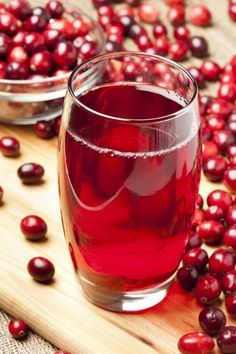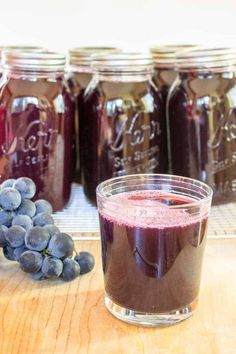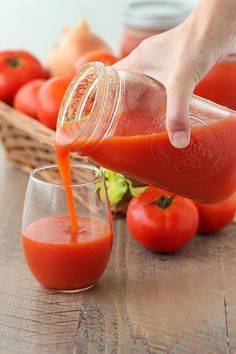Red Wine's Substitutes

Red wine is more than simply a nice drink to enjoy with your favorite dish or when socializing with friends. Red wine may also be used in a variety of dishes. If your recipe asks for red wine and you don’t have any on hand, you can use many other alternatives.
Red vinegar is an excellent alternative to red wine. You can, however, substitute it with white vinegar, pomegranate juice, or cranberry juice in your dishes.
Red Wine Substitutes
The red wine substitutes listed below will work well in any recipe calling for red wine. Also, they can be a suitable replacement if you’re making a red wine dish for kids.
1. Red and white vinegar
If you don’t have any red wine, chances are you have vinegar. Vinegar is utilized in various recipes and may be used instead of red wine in many of them.
Nevertheless, you should keep in mind that vinegar, whether red or white vinegar, has a greater amount of acidity. Red wine is also an excellent substitute for vinegar because many of its variants contain alcohol in some form or another like wine.
Vinegar is more acidic than wine, yet it has no discernible effect on the flavor of your food. It may be used in the same 1:1 ratio in recipes that incorporate liquids, sauces, or marinades.
Red wine vinegar is an excellent alternative for cooking beef or pork meals. White wine vinegar is also an excellent alternative for cooking poultry or fish meals.
2. Cranberry juice

Cranberry juice is also an excellent substitute for red wine. It has a hue that is similar to red wine, but it also has a tangy flavor that enhances the flavor of many dishes.
Use the same quantity of this juice as you would of red wine and your meals will taste just as good. However, keep in mind that cranberry juice is sweeter than wine.
You may use cranberry juice instead of wine in any recipe that calls for sugar because it is a sweeter substitute. It is perfect for salad dressings, marinades, and specialized sauces complementing the meat.
3. Pomegranate juice
Pomegranate juice is a wonderful substitute for red wine since it has a similar dark hue and a very nice taste. You may want to use less than you would use red wine because pomegranate has a strong flavor.
When compared to red wine, this juice has a lower acidic content. As a result, if you like a more acidic flavor, you might want to add a tablespoon of vinegar. Pomegranate juice may be used to make a variety of sauces for meat or vegetables and several salad dressings. Pomegranate juice is also healthful, which adds to the nutritional value of your food.
4. Ginger juice
You may use ginger juice as a substitute for red wine and create a delicious dinner to share with your friends or family. Ginger has a taste that is somewhat similar to but not identical with red wine.
There are several varieties of ginger juices available, including carbonated versions that include lemon and sugar in addition to ginger extract. If you use ginger juice instead of red wine, your cuisine will seem different since it will be lighter in color.
Depending on how much ginger juice you want, you can add either more or less than you would usually add red wine. Ginger juice may be used as a substitute for red wine in salads or marinades for fish or poultry, as it combines well with these types of dishes.
5. Grape juice

It is because red wine is created from grapes that grape juice can serve as a suitable substitute. Grape juice has more sugar than red wine. As a result, the flavor of your food will be somewhat different. However, if you don’t mind the added sweetness, you can substitute grape juice for red wine at any time.
You may use this juice in place of red wine in a one-to-one ratio, so the amount remains the same. Grape juice can be used in place of red wine in various dishes, including stews, salads, and sauces.
6. Vegetable stock
If you use veggie stock instead of red wine in stews or soups, you’ll enjoy the results. This substitution will not work for salads or cold foods, but it is an excellent choice for heated dishes.
If you don’t have vegetable stock, you may use chicken or beef stock. If you want to maintain a constant color scheme, use beef stock, for it is darker than chicken or vegetable stock. You may use more of it in terms of proportion because beef stock has a milder flavor than wine.
7. Apple juice
You might be shocked to know that apple juice can be used in place of red wine in practically any recipe. Many cooks utilize this trick when they run short of red wine.
Apple juice is sweet and might help enhance the flavor of your food. It can also be a deeper hue, which provides any meal with the desired look.
In terms of proportion, use the same amount of apple juice as you would red wine, and your cuisine will taste fantastic. When your recipe asks for a modest bit of wine, to begin with, you can substitute apple juice for it.
8. Lemon juice
Another red wine replacement that may surprise you is lemon juice. It will not have the same color as red wine, but it has a comparable flavor because lemon juice is acidic.
However, because lemon juice may have a strong flavor, taste your food as you gradually add it while cooking.
To avoid an overpowering flavor, use half the amount compared to the amount of wine you would normally use. If the recipe asks for one cup of wine, you may substitute half a cup of lemon juice and taste the dish before adding more.
9. Tomato juice

Tomato juice is widely used in place of red wine, but it is not the best substitution because it might alter the flavor of your cuisine. It will, however, offer the desired color to your meal as well as a pleasing flavor, so you may use it if you run out of red wine.
Note that tomato juice is acidic, and you may use the same amount in your cuisine as you would red wine. It works well in prepared meals like soups and stews.
10. Water
If no options are available, you can always add water to your meal. Just make sure that the preparation doesn’t become too watery. Even if it does not improve the flavor or color of your cuisine, it might provide the desired saucy texture.
If you don’t have red wine, you may also use powdered ginger or lemon essence for some acidity in your cuisine. To get the required texture, add as much water as needed. Check that your dish is not runnier than you intended.
When is Red Wine Required in a Recipe?
If you need to use red wine, you’re most likely making a stew or a meat dish. Red wine complements beef and pork dishes, as well as marinades. It may, however, be used to enhance the flavor of vegetable stews and salad dressings.
Red wine’s acidic but fruity flavor will improve the flavor of your cuisine and amaze all of your visitors. If you don’t have red wine, use one of the components listed above.
Red Wine Substitute in Stews
Beef stock is the finest alternative for red wine when making a stew, especially a beef stew. You may also use vegetable stock, which will enhance the flavor of your stew and give it a fuller flavor.
You may also use tomato sauce because of its color and acidic flavor. If you’re curious about the ratio, you may use a one-to-one ratio for tomato sauce. However, you can use more of it for a stock than you would red wine, depending on your preference.
Conclusion
Red wine will easily be substituted in most cuisines that call for it. Your cuisine will taste just as good if you use any of the items in this guide.
Even if you don’t use red wine, you may still follow the recipe’s instructions. You could also opt to maintain one of the red wine alternatives as a permanent element, stocked with your everyday groceries, so that you may use it in your favorite recipes.











